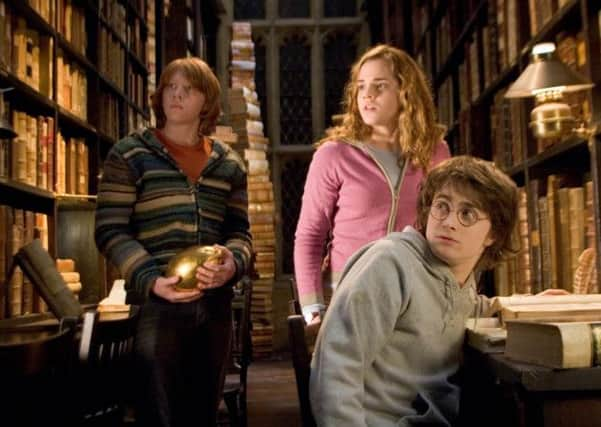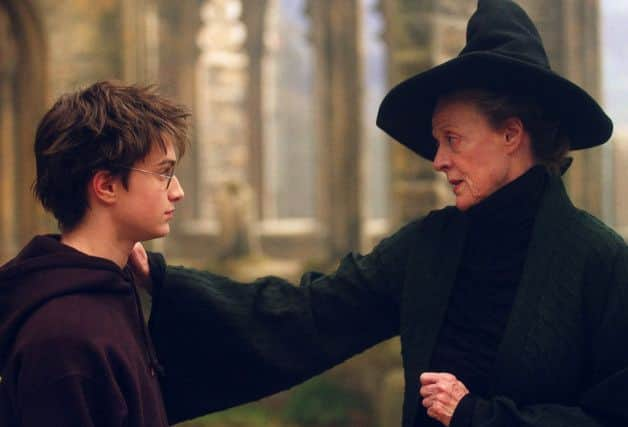11 Scottish connections in the Harry Potter series


Rowling has plenty of personal links with Scotland; her parents met on a train bound for Arbroath in the 1960s, her mother was half-Scottish and her maternal great-grandfather was born on the Isle of Arran.
Her residency in Edinburgh, too, has undoubtedly had an influence on her writing.
Advertisement
Hide AdThere are a number of Scottish links in the seven-book series, some more obvious than others. Here are 11 Scottish links, some more obscure than others. How many were you aware of?


1. Professor McGonagall
ALBUS Dumbledore’s second-in-command and Head of Gryffindor House, Minerva McGonagall comes from a Caithness family. Born to Isobel (a witch) and Robert Sr. (a muggle), we meet her as the Professor of Transfiguration, although she later becomes headmistress of Hogwarts following Dumbledore’s death.
2. Scottish Quidditch teams
THERE are a fair few Quidditch teams based in Scotland, most notably the Montrose Magpies, who play in black and white robes, the Pride of Portree - founded in 1292 - and the Wigtown Wanderers, established in 1422. Rather amusingly, the Scottish national Quidditch team fares little better than its real life rugby and football counterparts, and in the fourth book (Harry Potterand the Goblet of Fire), were said to have been ‘slaughtered by Luxembourg’ during a Quidditch World Cup match.
3. Hogwarts School of Witchcraft and Wizardry
Harry’s school, Hogwarts, is located in Scotland, along with the nearby village of Hogsmeade and although its exact location is never disclosed, Hermione Granger at one point mentions that it is close to Dufftown. However, avid Potter fans believe the actual location is in the North West Highlands, somewhere such as Sutherland, thanks to the relative remoteness of the area.
4. The Loch Ness ‘Monster’
Scotland regularly falls foul of Clause 73 of the International Statute of Wizarding Secrecy, designed to ensure the secrecy of magical creatures. This is a result of the world’s largest kelpie – a supernatural water horse from Celtic folklore believed the haunt bodies of water in Scotland – residing in Loch Ness.
5. Glasgow
Gilderoy Lockhart claims in his book Marauding with Monsters that he defeated a colony of imps on the bank of the River Clyde while hunting for the fabled ‘Weetimrousbeastie’ – a Robert Burns reference - in Glasgow.
The city is also home to a branch of Eeylops Owl Emporium.
6. Hebridean Black Dragon
Advertisement
Hide AdOne of two dragon species found in the British Isles, the Hebridean Black is, like its name suggests, native to the Hebrides. With purple eyes and capable of growing up to 30 ft long, the Hebridean Black is more vicious and aggressive than its British counterpart, the Common Welsh Green. Its favourite food is deer, although it has been known to carry off cows as well.
7. Argyllshire
There’s a map of Argyllshire hanging on the second floor at Hogwarts. The Fat Lady, the portrait protecting the Gryffindor common room, hides in the map when she is attacked by Sirius Black during Harry Potter and the Prisoner of Azkaban, when he tries to gain access to the common room without the password.
8. Creaothceann
Advertisement
Hide AdA highly dangerous game, creaothceann – meaning ‘wounded head’ - was a game played on broomsticks, and involving a hundred charmed rocks. Wearing cauldrons strapped to their heads, players would fly around the field attempting to catch as many rocks in their cauldron as possible.
9. Torquil McTavish
Scots broom flyer Torquil McTavis, challenged bitter enemy Silvio Astolfi of Italy to a broom race from Aberdeen to Rome, in 1754. The race ended in chaos as a riot at the finishing line led to the destruction of the Coliseum, with a Ministry of Magic representative casting a spell to restore the building before Muggles noticed the damage.
10. Glentress Forest
This forest, near Peebles, was the inspiration behind the Forbidden Forest in the grounds of Hogwarts. JK Rowling frequently visited towns outside of Edinburgh while writing the novels, and travelled to Peebles and its Forest of Glentress.
11. Rowena Ravenclaw
One of the four founders of Hogwarts along with Godric Gryffindor, Salazar Slytherin and Helga Hufflepuff, Rowena Ravenclaw is thought to hail from Scotland as the Sorting Hat describes her as ‘fair Ravenclaw from Glen’, which seems to suggest Scottish roots. She is thought to have devised Hogwarts’ many moving staircases and changing floor plans.